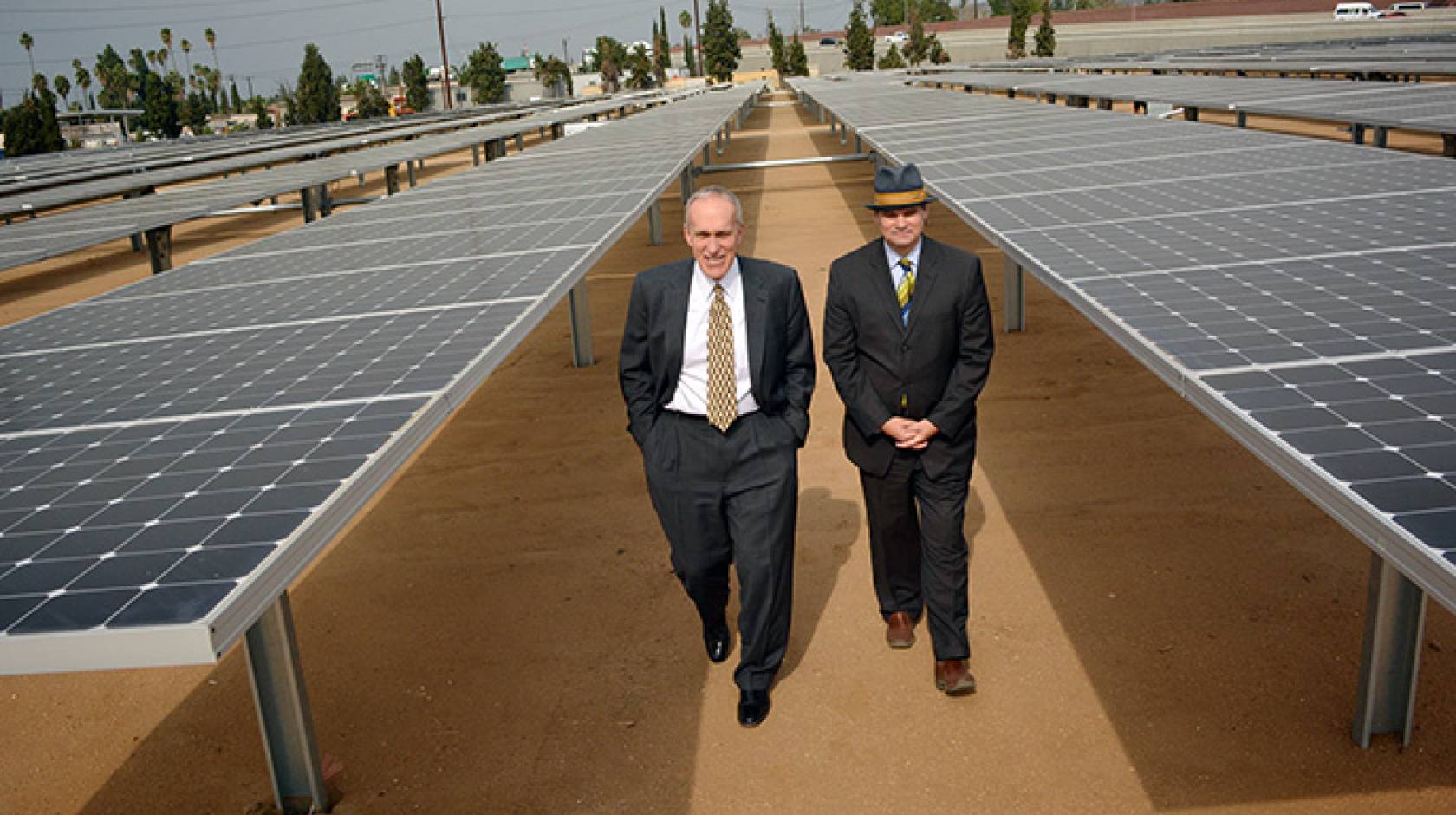Harry Mok, UC Newsroom

The University of California quietly met an important milestone in 2014: It successfully reduced greenhouse gas emissions to the same level as 14 years ago. It also took several major steps toward achieving carbon neutrality by 2025.
First, UC became an electric service provider and wholesale power provider, which will help it choose cleaner power sources for the electricity it buys. As of January 2015, UC is directly supplying power to five campuses, three medical centers and other electricity accounts throughout the system.
Next, UC made the largest solar power purchase of any higher education institution in the country. Once the new solar arrays come online in 2016, about 15 percent of the electricity used by UC will come from the sun.
These actions are crucial to UC's efforts to ramp up its use of renewable energy sources, a cornerstone for reaching zero-net greenhouse gas emissions from its buildings and vehicles by 2025, the goal of UC President Janet Napolitano's Carbon Neutrality Initiative.
Climate action leadership
"Our efforts during 2014 exemplify the University of California’s leadership in sustainability," said UC Executive Vice President Nathan Brostrom. “We made great strides toward carbon neutrality and harnessed the entire university — our students, staff, faculty and researchers — to pursue this daunting challenge.”
The annual report tracks UC’s progress toward achieving carbon neutrality and its advances in nine areas covered by its sustainability policy: green building, clean energy, transportation, climate protection, sustainable operations, waste reduction and recycling, environmentally preferable purchasing, sustainable foodservice and sustainable water systems.
Although carbon neutrality had been a long-term goal of UC's sustainable practices policy, Napolitano galvanized efforts across the system by setting a 2025 deadline.
In June, she appointed experts from inside and outside UC to a Global Climate Leadership Council and charged the group with mapping a strategy for the university to meet its carbon neutrality and related sustainability goals.
“A bold commitment to carbon neutrality is at the core of climate leadership,” said Timothy Carter, president of Second Nature, which oversees the American College & University Presidents’ Climate Commitment that has been signed by all 10 UC chancellors. “Scaling campus commitments across a state system like UC moves the needle even further.”
Saving money
UC's green efforts are not just good for the environment — they are also saving the university money.
An energy efficiency partnership with the state’s investor-owned utilities that began in 2004 has allowed UC to avoid roughly $28 million in annual costs, or about $140 million cumulatively, according to the annual report.
Through the partnership, UC received $7.1 million in incentives during 2014, helping defray costs for 80 different energy efficiency projects on UC campuses.
In addition to those operational efforts, UC is bringing the full power of its research enterprise to bear on the climate neutrality goal.
In October, the council's applied research working group convened a workshop at UC Santa Barbara to set research priorities. Participants included researchers and sustainability managers from all 10 UC campuses, the Division of Agriculture and Natural Resources and the UC-affiliated national laboratories at Berkeley, Livermore and Los Alamos.
The 2025 deadline has fostered a sense of urgency and is spurring an unprecedented a level of systemwide collaborations, said David Auston, executive director of the Institute for Energy Efficiency at UC Santa Barbara, who co-chaired the workshop.
“It is really energizing students, staff and faculty,” Auston said. “And a great example of leadership on the part of President Napolitano to get us moving forward.”
The recommendations to come out of the workshop include: research focused on expanding the use of biofuels; developing smart building management systems to improve energy efficiency; and advancing battery storage technology to enhance the use of solar power.
Read the complete annual report on the UC sustainability website.

